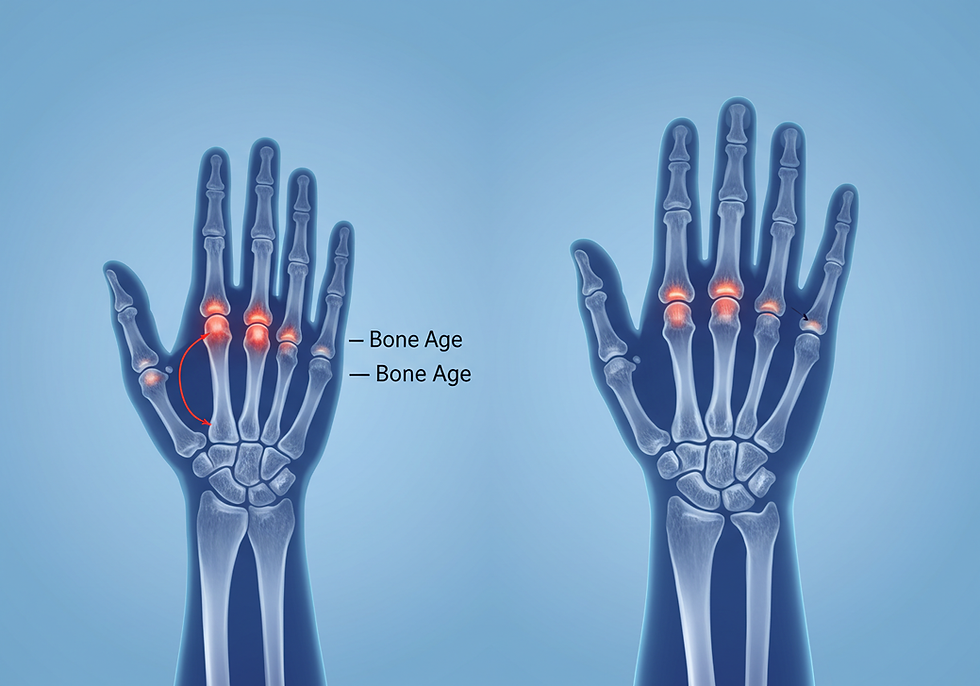8 Clear Signs That You Have Stopped Growing in Height
- deliventuravn
- Aug 7
- 6 min read
It usually creeps up on you. One day, you're measuring yourself against a door frame, and six months later—nothing's changed. Most people stop growing between 16 and 21, depending on genetics, hormones, and the timing of puberty. But it's not just about the number of birthdays you've had. It's about what’s happening inside your bones—literally.
Growth happens at the epiphyseal plates, soft cartilage near the ends of long bones. When you hit puberty, these plates start to harden—a process called growth plate fusion. Once they close up, that's it. You've hit skeletal maturity, and your height is locked in. On average, girls stop growing around age 16, and boys around 18 to 21, but there are always outliers.
Puberty Has Ended: What That Means for Your Height
Once puberty wraps up, most people stop getting taller—permanently. This isn’t a guess—it’s biology. Growth plates, those soft zones at the ends of your long bones, are what allow you to grow. But once they close, you’re done. In most girls, that happens by age 15–17. For guys, it’s usually 16–19. After that, no matter what supplement or secret “hack” you try, your bones won’t stretch any further.
The main culprits? Estrogen and testosterone. These hormones skyrocket during puberty and help you grow at first—but here’s the twist: they also tell your growth plates when to shut down. Estrogen is the key player here, even in males. It triggers the final fusion of those plates. So whether you’re noticing facial hair, voice deepening, menarche, or breast development, those are all signs you’re in the late stages of puberty—and nearing the end of your growth window.
No Recent Changes in Shoe or Clothing Size
When your shoe size hasn’t budged and your clothes fit just like last year, chances are—you’ve hit your final height. Most people don’t realize this, but one of the earliest signals that your growth spurt is behind you isn’t something dramatic. It’s subtle. It’s in the things you wear every day. Shoes, especially, are a quiet giveaway. If your foot size hasn’t increased in over 12 months, it likely means your long bone growth—especially in the tibia and femur—has wrapped up.
Growth charts from pediatric studies back this up. For example, a 2024 NIH longitudinal survey found that foot size typically stabilizes around 15.5 years for girls and 17.3 for boys, aligning almost perfectly with the slowdown in height gain. If your shoe size has held steady for a year or more, you’re not just done buying new sneakers—you’re probably done growing.
Growth Plate Closure on X-Ray
If you're trying to figure out whether you can still grow taller, the growth plate is the place to look—and the X-ray doesn't lie. No matter how young (or old) you feel, your bones tell a different story. That story gets written in epiphyseal plates, also known as growth plates. These cartilage zones sit at the ends of long bones like the tibia, femur, and radius, and they’re where all your height potential gets decided.
Now here’s the kicker: once those plates fuse, you’re done growing—period. On an X-ray, an open growth plate shows up as a clear, dark line. Once it’s closed? That line disappears, replaced by solid white bone. That’s called epiphyseal fusion. It’s subtle to the untrained eye, but obvious to any radiologist or orthopedic specialist. This is why a simple wrist radiograph can answer the question people spend years guessing: Can I still grow?
No Increase in Height Over 6–12 Months
If your height hasn’t changed in the last 6 to 12 months, chances are high that your growth spurt has ended. This is especially true if you're in your late teens and your growth plates have closed. While it’s tempting to assume you might just be in a “slow phase,” most growth slowdowns during adolescence still show some measurable increase every few months—even if it’s just a few millimeters. So if your height has stayed exactly the same over two or three home measurements, it’s time to consider the possibility that you’ve reached your adult height.
But before jumping to conclusions, let’s talk about how you’re measuring. Standing height is surprisingly easy to mess up. If you’re tracking growth using a bathroom wall and a pencil, your readings might be off by as much as 1–2 cm. That’s enough to fake “no growth” even when you’re still gaining height. A proper stadiometer or even a marked wall ruler with level footing and a flat surface is the way to go. And always, always measure in the morning—you’re taller right after waking up, and the difference can be significant (up to 1.5 cm for some people).
See more tips to grow taller at https://www.nubest.com/blogs/growth-tips/how-to-get-taller
Bone Age Matches Chronological Age
When your bone age lines up with your chronological age, that’s usually a green light—your body is developing as expected, and your growth potential hasn’t hit any red flags. Pediatric endocrinologists use bone age assessments not just to track development, but to quietly predict how tall someone might grow in the years ahead. It’s not guesswork—this is science based on decades of comparative data.
Most bone age tests involve a left-hand X-ray, a method that hasn’t changed much in 70 years because it works. The scan is matched against a reference book called the Greulich-Pyle atlas, which catalogs thousands of X-rays by age and sex. If your scan matches what’s expected for your age, your skeletal maturity is considered “on time.” That means your growth plates are still open, your hormone levels are probably in range, and your timeline for height growth is progressing without any surprises.

Slower Metabolism & Body Changes
There’s a point when your body stops chasing height and starts managing maintenance. One of the first real signs that height growth is slowing—or even done—is a noticeable shift in how your metabolism behaves. You’ll probably feel it before you understand it: less appetite, easier fat gain, slower muscle recovery. That sudden energy you had as a teenager? It fades, quietly.
This change is tied directly to your basal metabolic rate (BMR). After puberty, your body isn’t burning as many calories at rest. Why? Because it’s no longer driving growth at full speed. In fact, researchers found that metabolic rate begins to drop around age 20, and continues to decline gradually through adulthood. That’s not bad—it’s biology. Your endocrine system recalibrates, and hormones like growth hormone (GH) and IGF-1 start to taper off.
Family Height Patterns Match Yours
If you’ve ever compared your height with your parents or siblings and wondered, “Is this just in my DNA?” — you’re on the right track. Most of your adult height is pre-written in your genes. That might sound limiting, but it’s also empowering — because the more you understand your family height patterns, the better you can forecast your growth curve.
One of the most trusted methods experts (and even pediatricians) still use is the mid-parental height formula. It’s simple: average your parents’ heights and adjust based on gender. For boys, you add 13 cm; for girls, subtract 13. Then divide by two. It’s not magic — it’s math, grounded in real-world genetics. This method typically lands within ±2 inches of your final adult height, assuming no major growth disruptions. So if your dad is 6'1" and your mom is 5'5", you’re likely to land somewhere around 5'11", give or take.
Hormone Levels Stabilize
Once puberty wraps up, your body flips a biological switch—and height growth usually stops. That’s not just folklore; it comes down to cold, hard hormone shifts. Specifically, levels of growth hormone (GH) and insulin-like growth factor 1 (IGF-1) drop off dramatically. These two are the main drivers behind bone lengthening during your peak growth years. But as they decline, so does your shot at getting taller.
To put it bluntly: you’re not going to grow taller if these hormones have bottomed out. And the tricky part? You can’t guess this just by how you feel or look. You need blood work. A standard hormone panel or endocrine test will show exactly where you stand. If your IGF-1 levels are below your age’s expected reference range, and GH output is low, it’s a clear sign your growth plates may already be closed—or close to it.







Comments